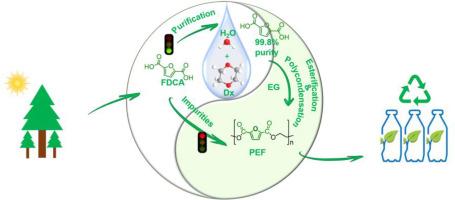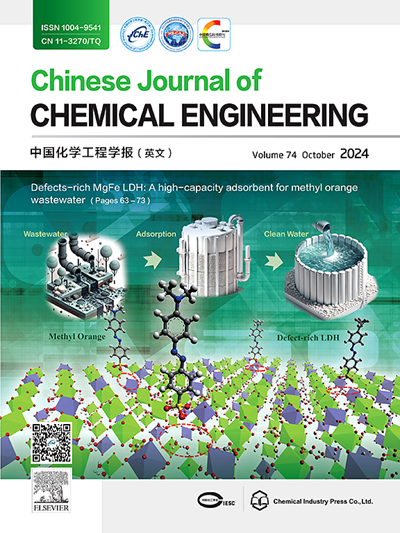Impact of impurities in 2,5-furandicarboxylic acid on the synthesis of Poly(ethylene 2,5-furandicarboxylate) and its purification by crystallization in a binary solvent system
IF 3.7
3区 工程技术
Q2 ENGINEERING, CHEMICAL
引用次数: 0
Abstract
Poly(ethylene 2,5-furandicarboxylate) (PEF), a bioplastic synthesized via the polymerization of 2,5-furandicarboxylic acid (FDCA) with ethylene glycol, can be served as a substitute to petroleum-based polyethylene terephthalate (PET) due to its enhanced material properties. However, the fabrication of PEF with stable and desirable properties is still a challenge, largely due to the impurities in FDCA. In this study, a highly efficient purification strategy for FDCA was proposed, utilizing a dioxane/H2O binary solvent system for effective crystallization. Furthermore, PEFs were synthesized from FDCA with varying impurity and the effects of these impurities were systematically characterized. The results revealed that impurities in FDCA could result in PEFs with relatively poor thermal properties. This study provides crucial insights for the impact of impurities on PEF properties and FDCA purification.

2,5-呋喃二羧酸中杂质对聚乙烯2,5-呋喃二羧酸酯合成及二元溶剂体系结晶提纯的影响
聚乙烯2,5-呋喃二甲酸酯(PEF)是一种由2,5-呋喃二甲酸酯(FDCA)与乙二醇聚合而成的生物塑料,由于其增强的材料性能,可以作为石油基聚对苯二甲酸乙二醇酯(PET)的替代品。然而,制造具有稳定和理想性能的PEF仍然是一个挑战,主要是由于FDCA中的杂质。本研究提出了一种高效的纯化FDCA的策略,利用二氧六烷/水二元溶剂体系进行有效的结晶。在此基础上,用不同杂质的FDCA合成了PEFs,并系统地表征了这些杂质对PEFs的影响。结果表明,FDCA中的杂质会导致PEFs的热性能相对较差。这项研究为杂质对PEF性能和FDCA净化的影响提供了重要的见解。
本文章由计算机程序翻译,如有差异,请以英文原文为准。
求助全文
约1分钟内获得全文
求助全文
来源期刊

Chinese Journal of Chemical Engineering
工程技术-工程:化工
CiteScore
6.60
自引率
5.30%
发文量
4309
审稿时长
31 days
期刊介绍:
The Chinese Journal of Chemical Engineering (Monthly, started in 1982) is the official journal of the Chemical Industry and Engineering Society of China and published by the Chemical Industry Press Co. Ltd. The aim of the journal is to develop the international exchange of scientific and technical information in the field of chemical engineering. It publishes original research papers that cover the major advancements and achievements in chemical engineering in China as well as some articles from overseas contributors.
The topics of journal include chemical engineering, chemical technology, biochemical engineering, energy and environmental engineering and other relevant fields. Papers are published on the basis of their relevance to theoretical research, practical application or potential uses in the industry as Research Papers, Communications, Reviews and Perspectives. Prominent domestic and overseas chemical experts and scholars have been invited to form an International Advisory Board and the Editorial Committee. It enjoys recognition among Chinese academia and industry as a reliable source of information of what is going on in chemical engineering research, both domestic and abroad.
 求助内容:
求助内容: 应助结果提醒方式:
应助结果提醒方式:


